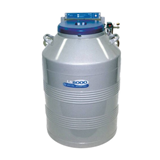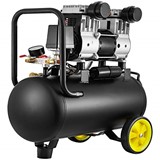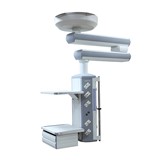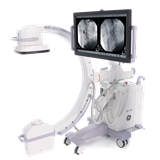Dental ultrasonic cleaners are essential tools in dental practices, providing efficient and effective cleaning of dental instruments and equipment. To ensure the longevity and optimal performance of these valuable devices, proper maintenance and care are crucial. In this article, we will discuss essential maintenance tips and care guidelines for dental ultrasonic cleaners in Brisbane, helping dental professionals maintain their equipment and achieve optimal cleaning results.
Importance of Regular Maintenance to Ensure Optimal Performance and Longevity
Regular maintenance plays a vital role in maintaining the optimal performance and longevity of various equipment and devices, including dental ultrasonic cleaners. By implementing a consistent maintenance routine, you can prevent issues, maximize efficiency, and extend the lifespan of your equipment. In this article, we will emphasize the importance of regular maintenance and provide insights into the benefits it offers.
1. Regular Cleaning and Descaling
Regular cleaning and descaling of the dental ultrasonic cleaner's tank is vital to prevent the buildup of contaminants and mineral deposits. After each use, thoroughly clean the tank by emptying the solution and rinsing it with warm water. Avoid using abrasive cleaners or harsh chemicals that may damage the tank. Periodically, it is necessary to descale the tank to remove any mineral deposits. Follow the manufacturer's instructions for the appropriate descaling solution and procedure.
2. Proper Solution Preparation
Using the correct cleaning solution is essential for effective cleaning and preventing damage to the ultrasonic cleaner. Always follow the manufacturer's guidelines for solution preparation. Use a mild, non-corrosive cleaning solution specifically designed for dental instruments. Avoid using bleach, chlorine, or other strong chemicals that may degrade the cleaner's components. Improper solution preparation can lead to poor cleaning results and potential damage to the equipment.
3. Handling and Placement of Instruments
When loading instruments into the dental ultrasonic cleaner, proper handling and placement are crucial. Avoid overcrowding the tank, as this can hinder the cleaning process and potentially damage the instruments. Ensure that instruments are fully immersed in the cleaning solution, allowing the ultrasonic waves to reach all surfaces. Additionally, separate sharp instruments from delicate ones to prevent damage. Follow the manufacturer's guidelines for the maximum capacity and recommended instrument placement.
4. Monitoring and Maintenance of Transducers
The transducers are the heart of the dental ultrasonic cleaner, converting electrical energy into ultrasonic waves. Regular monitoring and maintenance of the transducers are essential for optimal performance. Inspect the transducers for any signs of damage or wear and tear. Clean them gently with a soft cloth to remove any debris or residue. If there are any issues with the transducers, consult the manufacturer or a qualified technician for proper maintenance or replacement.
5. Regular Equipment Inspection
Performing regular equipment inspections is crucial to identify any potential issues or malfunctions. Check all connections, cables, and controls to ensure they are secure and functioning correctly. Inspect the display panel and controls for any signs of damage or malfunction. If you notice any abnormalities or unusual noises during the operation, immediately discontinue use and seek professional assistance. Regular inspections help identify problems early on and prevent further damage or breakdown.
6. Following the Manufacturer's Guidelines
The most important aspect of maintaining a dental ultrasonic cleaner is to follow the manufacturer's guidelines and recommendations. Each ultrasonic cleaner model may have specific care and maintenance instructions provided by the manufacturer. These guidelines typically include information on cleaning solutions, descaling procedures, maintenance checks, and troubleshooting. Adhering to these instructions will ensure that the equipment functions optimally and prolong its lifespan.
Step-by-step Guide on Cleaning and Descaling the Dental Ultrasonic Cleaner
When it comes to maintaining the performance and longevity of your dental ultrasonic cleaner, proper cleaning and descaling are crucial. Over time, mineral deposits, contaminants, and residue can build up, affecting the efficiency and effectiveness of the cleaning process. In this comprehensive step-by-step guide, we will walk you through the process of cleaning and descaling your ultrasonic cleaner, ensuring optimal results and extending the lifespan of your equipment.
Step 1: Preparation
Before you begin the cleaning process, it is important to gather all the necessary materials and tools. Here's what you'll need:
- Distilled water: Using distilled water ensures that no additional minerals or impurities will be introduced during the cleaning process.
- Mild detergent or specialized ultrasonic cleaning solution: Choose a detergent or solution that is specifically formulated for dental ultrasonic cleaners. Avoid using harsh chemicals or abrasive substances that could damage the equipment.
- Soft-bristle brush: This will be used for cleaning the tank and removing any stubborn residue.
- Microfiber cloth: Ideal for wiping down the exterior surfaces of the dental ultrasonic cleaner.
- Personal protective equipment (PPE): It's important to prioritize safety during the cleaning process. Wear gloves and safety glasses to protect your hands and eyes.
Step 2: Emptying the tank
Start by emptying the cleaning solution from the tank of your ultrasonic cleaner. Dispose of the used solution properly according to local regulations. Once the tank is empty, inspect it for any visible debris or residue that can be removed manually. Carefully wipe down the tank with a damp microfiber cloth to remove any loose particles.
Step 3: Preparing the cleaning solution
Now it's time to prepare the cleaning solution. Follow the manufacturer's instructions on the appropriate dilution ratio if you are using a specialized dental ultrasonic cleaning solution. If you prefer a mild detergent, mix it with distilled water according to the instructions provided.
Step 4: Filling the tank
Fill the tank with the prepared cleaning solution, ensuring that you do not exceed the maximum fill line indicated by the manufacturer. Adding too much liquid may result in spillage during the cleaning process.
Step 5: Running the cleaning cycle
Place the items you wish to clean in the tank, making sure they are fully submerged in the cleaning solution. Close the lid of the dental ultrasonic cleaner to prevent any splashing or evaporation of the solution. Turn on the ultrasonic cleaner and set the desired cleaning cycle duration and intensity. Follow the manufacturer's instructions regarding the recommended settings for different types of items.
Step 6: Cleaning the tank
While the dental ultrasonic cleaner is running, use a soft-bristle brush to gently scrub the interior surfaces of the tank. Pay extra attention to areas with visible deposits or stubborn residue. Be careful not to scratch or damage the tank with excessive force. Continue brushing until the tank appears clean and free from any buildup.
Step 7: Draining and rinsing
Once the cleaning cycle is complete, drain the cleaning solution from the tank. Rinse the tank thoroughly with distilled water to remove any remaining detergent or cleaning solution. This step is essential to prevent any residue from affecting the performance of future cleaning cycles.
Step 8: Drying and maintenance
After rinsing, wipe down the tank with a clean microfiber cloth to remove excess moisture. Leave the lid of the ultrasonic cleaner open for a few hours to allow complete drying. Once the tank is dry, inspect it for any signs of damage or wear. If necessary, perform any required maintenance tasks recommended by the manufacturer, such as replacing worn-out parts or lubricating hinges and joints.
Step 9: Regular maintenance schedule
To ensure the optimal performance and longevity of your ultrasonic cleaner, it is important to establish a regular maintenance schedule. By incorporating these simple maintenance tasks into your routine, you can prevent the buildup of residue and maintain the efficiency of your equipment:
- Daily cleaning: After each use, empty the cleaning solution from the tank and wipe down the interior surfaces with a damp cloth. This will remove any loose debris and prevent it from accumulating over time.
- Weekly descaling: Once a week, perform a descaling procedure to remove mineral deposits that may have formed in the tank. Prepare a descaling solution by mixing equal parts of white vinegar and distilled water. Fill the tank with the solution and run the dental ultrasonic cleaner for a short cycle. Afterward, drain the solution, rinse the tank with distilled water, and dry it thoroughly.
- Monthly inspection: Every month, conduct a thorough inspection of your dental ultrasonic cleaner. Check for any signs of damage, such as cracks or leaks in the tank, loose connections, or worn-out parts. Address any issues promptly to prevent further damage and ensure the continued functionality of your equipment.
- Annual maintenance: Once a year, consider performing a more comprehensive maintenance routine. This may involve replacing worn-out components, lubricating moving parts, and recalibrating any necessary settings. Consult the manufacturer's guidelines or seek professional assistance for complex maintenance tasks.
Step 10: Best Practices
In addition to following the step-by-step guide, here are some best practices to further enhance the cleaning and descaling process for your dental ultrasonic cleaner:
- Avoid overcrowding: It is important not to overload the tank with too many items during the cleaning cycle. Overcrowding can hinder the effectiveness of the ultrasonic waves and result in uneven cleaning. Leave enough space for the items to move freely within the tank.
- Use appropriate cleaning solutions: Stick to specialized dental ultrasonic cleaning solutions or mild detergents specifically designed for dental ultrasonic cleaners. These solutions are formulated to effectively remove contaminants without causing damage to the equipment.
- Regularly replace cleaning solutions: Over time, the cleaning solution can become contaminated with debris and lose its effectiveness. It is recommended to replace the solution after each cleaning cycle to ensure optimal cleaning results.
- Store the dental ultrasonic cleaner properly: When not in use, store the ultrasonic cleaner in a clean and dry environment. Keep it away from direct sunlight and extreme temperatures. This will help prevent the buildup of dust, maintain the integrity of the equipment, and prolong its lifespan.
Expert Advice on Troubleshooting Common Issues and When to Seek Professional Servicing
When using an dental ultrasonic cleaner, it's not uncommon to encounter certain issues that may affect its performance. While some problems can be resolved through troubleshooting, there are instances where professional servicing is necessary. In this guide, we provide expert advice on troubleshooting common issues and offer insights into when it's appropriate to seek professional assistance.
1. Insufficient Cleaning Power
If you find that your dental ultrasonic cleaner is not delivering the expected cleaning power, there are a few troubleshooting steps you can take:
- Check the cleaning solution: Ensure that the cleaning solution is appropriate for the contaminants being removed and that it is at the recommended concentration.
- Adjust the cleaning time: Increase the cleaning time to allow for a more thorough cleaning cycle.
- Check the transducers: Transducers are responsible for generating the dental ultrasonic waves. Inspect them for any damage or loose connections.
If these troubleshooting steps do not resolve the issue, it may be time to consult a professional for further diagnosis and repair.
2. Excessive Noise or Vibration
Excessive noise or vibration can be disruptive and indicate underlying issues. Here's what you can do to troubleshoot:
- Check for proper leveling: Ensure that the ultrasonic cleaner is placed on a level surface. Adjust the leveling feet if necessary.
- Inspect for loose components: Check for loose parts or connections that may be causing the vibration. Tighten them securely.
- Clean the tank and transducers: Buildup of contaminants on the tank or transducers can lead to noise or vibration. Clean them thoroughly.
If the noise or vibration persists after these steps, it's recommended to seek professional servicing to prevent further damage.
3. Heating Issues
If the ultrasonic cleaner is not heating properly or at all, consider the following troubleshooting steps:
- Check the power supply: Ensure that the cleaner is connected to a reliable power source and that the power switch is in the correct position.
- Inspect the heating element: Check for any visible damage or signs of wear on the heating element. Replace it if necessary.
- Check the thermostat or temperature control: Verify that the thermostat or temperature control settings are correctly adjusted.
If the heating issue persists, it is advisable to contact a professional technician for a comprehensive assessment and repair.
4. Leaking
Leakage from the dental ultrasonic cleaner can compromise its performance and pose safety risks. To troubleshoot leaks:
- Check the tank and seals: Inspect the tank for cracks or damage. Ensure that the seals or gaskets are properly seated and intact.
- Tighten connections: Check all connections and fittings to ensure they are tightly secured.
- Inspect drain valves: If applicable, inspect the drain valves for any signs of leakage or damage.
If the leaking issue persists, it is crucial to seek professional servicing to avoid further damage and ensure safe operation.
When to Seek Professional Servicing
While troubleshooting can resolve many common issues, there are situations where professional servicing is warranted:
- Persistent or complex issues: If the problem persists despite troubleshooting efforts or if the issue is beyond your expertise, it's advisable to consult a professional technician.
- Electrical or wiring problems: Electrical issues should always be addressed by a qualified professional to prevent hazards.
- Warranty coverage: If your dental ultrasonic cleaner is still under warranty, contacting the manufacturer or an authorized service center is recommended.
Professional servicing ensures that the issue is accurately diagnosed and appropriately resolved, minimizing the risk of further damage and maximizing the lifespan of your dental ultrasonic cleaner.
Tips for Handling and Storing Dental Instruments in the Cleaner
Proper handling and storage of dental instruments in the dental ultrasonic cleaner are crucial to maintain their functionality, cleanliness, and longevity. In this guide, we will provide you with valuable tips on how to handle and store your dental instruments effectively, ensuring optimal results and maximizing the lifespan of your equipment.
1. Preparing the Instruments
Before placing the dental instruments in the dental ultrasonic cleaner, it is essential to prepare them properly. Follow these steps:
- Rinse: Thoroughly rinse the instruments under running water to remove any visible debris or contaminants.
- Disassemble if necessary: Disassemble any removable parts of the instruments as per the manufacturer's instructions. This allows for a more thorough cleaning process.
- Remove excess material: Use a soft-bristle brush to gently remove any residual material from the instruments. Pay close attention to crevices or hard-to-reach areas.
- Use a specialized cleaning solution: Choose a cleaning solution specifically formulated for dental instruments and compatible with dental ultrasonic cleaners. Follow the manufacturer's instructions regarding the appropriate dilution ratio.
2. Placing Instruments in the Cleaner
When placing the dental instruments in the dental ultrasonic cleaner, consider the following:
- Do not overcrowd: Avoid overcrowding the tank with too many instruments. Overcrowding can hinder the effectiveness of the cleaning process, as the dental ultrasonic waves may not reach all surfaces adequately. Leave enough space between instruments for optimal cleaning.
- Use a suitable instrument holder: Utilize instrument holders or baskets designed for dental ultrasonic cleaners. These holders prevent instruments from coming into direct contact with the tank and each other, minimizing the risk of damage or scratches.
3. Operating the Dental Ultrasonic Cleaner
To ensure the best results, follow these guidelines when operating the dental ultrasonic cleaner:
- Set the appropriate cycle: Select the recommended cleaning cycle duration and intensity for dental instruments. Refer to the manufacturer's instructions or consult with a dental professional for guidance.
- Avoid extended cleaning cycles: While it may be tempting to run the dental ultrasonic cleaner for longer durations, extended cycles can potentially cause excessive heat buildup and damage delicate instruments. Adhere to the recommended cycle duration to maintain instrument integrity.
4. Post-Cleaning Inspection
After the cleaning cycle is complete, inspect the instruments before storage:
- Rinse with distilled water: Thoroughly rinse the instruments with distilled water to remove any residual cleaning solution. Residual solution, if left on the instruments, may lead to discoloration or corrosion.
- Inspect for damage or wear: Carefully examine the instruments for any signs of damage, such as bent tips, loose components, or signs of wear. Address any issues promptly to prevent further damage or compromise their performance.
- Dry the instruments: Ensure that the instruments are completely dry before storage. Use a clean, lint-free cloth or compressed air to remove any remaining moisture. Moisture can lead to the growth of bacteria or the formation of rust.
5. Proper Storage
Appropriate storage is key to maintaining the cleanliness and functionality of dental instruments. Consider the following tips:
- Use sterilization pouches: Store cleaned and dried instruments in sterilization pouches to protect them from contamination and maintain their cleanliness until their next use.
- Separate instruments: Avoid storing different types of instruments together to prevent potential damage or cross-contamination. Use separate pouches or compartments for each instrument.
- Store in a clean and dry environment: Choose a dedicated storage area that is clean, dry, and free from dust or moisture. Avoid exposing the instruments to direct sunlight or extreme temperatures.
Guidance on Choosing the Appropriate Cleaning Solution and Ensuring Its Effectiveness
Selecting the right cleaning solution is essential for achieving optimal results when using an dental ultrasonic cleaner. The choice of cleaning solution depends on various factors, including the type of contaminants to be removed and the material of the items being cleaned. In this guide, we will provide you with valuable guidance on choosing the appropriate cleaning solution and ensuring its effectiveness.
1. Consider the Contaminants
Identifying the type of contaminants you need to remove is the first step in selecting the appropriate cleaning solution. Different contaminants require specific cleaning agents to effectively eliminate them. For example:
- Grease and oils: A degreasing solution or a mild detergent with grease-cutting properties is suitable for removing oils and grease.
- Rust and corrosion: A rust remover or a specialized cleaning solution formulated to tackle rust and corrosion is necessary.
- Mineral deposits: For scaling or hard water deposits, descaling solutions that contain acidic ingredients like citric acid or vinegar are effective.
Understanding the nature of the contaminants will help you narrow down the options and choose a cleaning solution that specifically targets the problem.
2. Consider Compatibility with Materials
The compatibility of the cleaning solution with the materials being cleaned is crucial to prevent damage. Some cleaning solutions may be too harsh for certain materials, leading to discoloration, corrosion, or degradation. Consider the following:
- Non-reactive solutions: If you're unsure about the compatibility of the cleaning solution with the material, opt for non-reactive and gentle cleaning solutions, such as mild detergents or specialized dental ultrasonic cleaning solutions designed for a wide range of materials.
- pH-neutral solutions: pH-neutral cleaning solutions are generally safe for most materials. They provide effective cleaning without the risk of causing damage or discoloration.
Always refer to the manufacturer's instructions or seek professional advice when dealing with delicate materials or complex cleaning requirements.
3. Read Reviews and Recommendations
To ensure the effectiveness of a cleaning solution, it can be helpful to read reviews and recommendations from other users or industry experts. Look for feedback on the cleaning solution's ability to remove specific contaminants and its overall performance. Online forums, product reviews, and professional forums can be valuable sources of information when making a decision.
4. Conduct Testing and Trials
Before using a new cleaning solution on a large scale, it is advisable to conduct testing and trials. Select a small batch of items or samples and clean them using the chosen cleaning solution. Evaluate the effectiveness of the solution in removing the contaminants and assess any potential side effects on the material or surface being cleaned. This testing phase allows you to make adjustments if necessary and ensures that the cleaning solution meets your specific needs.
5. Follow Manufacturer's Guidelines
Each cleaning solution may have specific usage instructions provided by the manufacturer. It is crucial to read and follow these guidelines carefully. The instructions may include information on dilution ratios, recommended cleaning times, and safety precautions. Adhering to the manufacturer's guidelines ensures the proper and effective use of the cleaning solution.
6. Monitor and Evaluate Results
Once you have selected a cleaning solution and incorporated it into your ultrasonic cleaning process, it is important to monitor and evaluate the results. Regularly assess the effectiveness of the cleaning solution in removing contaminants and achieving the desired level of cleanliness. If you find any issues or notice that the solution is not producing the desired results, consider making adjustments or seeking alternative solutions.
In conclusion, proper maintenance and care of dental ultrasonic cleaners are essential for their optimal performance and longevity. Regular cleaning and descaling of the tank, using the correct cleaning solution, handling instruments properly, monitoring and maintaining the transducers, and following the manufacturer's guidelines are crucial steps in maintaining these valuable devices. By implementing these maintenance tips and care guidelines, dental professionals can ensure the longevity of their ultrasonic cleaners and achieve optimal cleaning results, leading to improved efficiency and effectiveness in their dental practices.





























